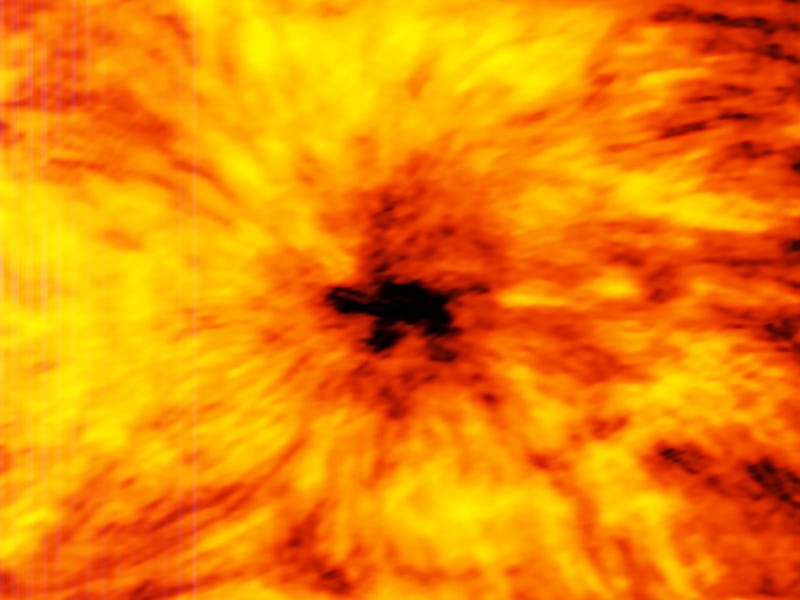
That black splotch in a sea of reds and yellows is an up-close-and-personal view of sun spot that’s bigger than two Earths.
Before we had this astounding image, from the Atacama Large Millimeter/submillimeter Array (ALMA) located in Chile, calculating the solar activity was all guesswork. The sun is about 27 million degrees Fahrenheit, making it a challenge to focus on the light centers of the star without the instruments being damaged by the extreme heat. Even from Earth, probes have failed under the heat in the past.
But ALMA’s antennas were specially designed to allow scientists to image the sun using radio interferometry, which involves using radio waves to get high resolution images on distant objects.
“We’re accustomed to seeing how our sun appears in visible light, but that can only tell us so much about the dynamic surface and energetic atmosphere of our nearest star,” said Tim Bastian, an astronomer with the National Radio Astronomy Observatory in Charlottesville, Virginia. “To fully understand the sun, we need to study it across the entire electromagnetic spectrum, including the millimeter and submillimeter portion that ALMA can observe.”
In sun spots like this one, the magnetic field is so dense that it forms a cooler, darker region within the photosphere of the star. The spots usually have a short life span, sometimes only lasting a few days or weeks at a time. But, they are very important to recognize and understand because a grouping of them can instantly turn into an action-packed zone that can shoot off solar flares.
Solar flares occur when magnetic energy builds up and shoots out in a flash of light. When a solar flare reaches earth, known as a [solar storm](https://www.inverse.com/article/22354-obama-wants-to-safeguard-us-from-solar-storms), it can cause an array of issues for us earthlings. The last solar storm in the U.S. in 1972, wiped out phone communications across several states. In 1989, a solar flare disrupted the electric grid in Canada, causing a huge blackout and leaving six million people without power for about nine hours.
With the potential for solar storms to wreak so much havoc here on Earth, every bit of data that helps scientists develop better models for predicting solar activity is incredibly valuable. In this case, we’re also gifted with a pretty badass picture of the sun as well.